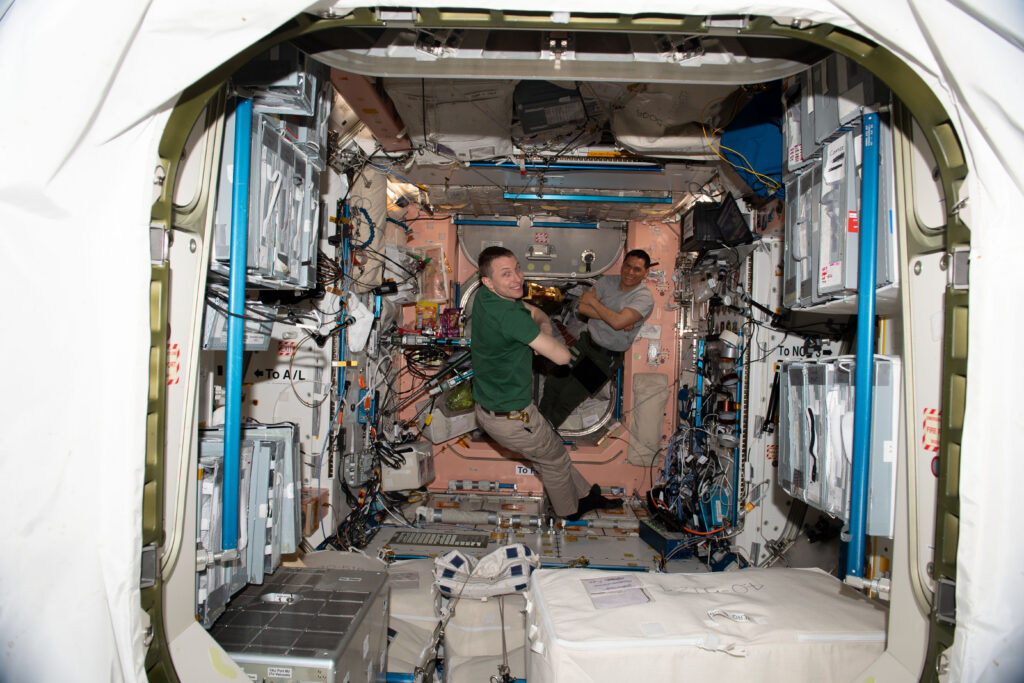Space Biology, Human Health Research and Robotics Work to Kick off Week

The Expedition 69 crew aboard the International Space Station is keeping busy on Monday with Genes in Space operations, human health research, robotics work, and station maintenance.
NASA Flight Engineer Frank Rubio started his day removing hard drives for future return. Following last week’s session, Rubio once again booted up the Surface Avatar laptop computer in the Columbus Laboratory module and ran another session to investigate how haptic controls, user interfaces and virtual reality could command and control surface-bound robots from long distances.
NASA astronaut Woody Hoburg began his day installing a carbon analyzer that determines the quality of recovered water aboard the orbital lab. He then set up hardware for the Standard Measures investigation—research that collects a set of core measurements from astronauts related to human spaceflight before, during and after long-duration missions—then later collected saliva samples to contribute to ongoing human research.
Midday, Hoburg moved into the Japanese Experiment Module to install new ethernet cables. He ended his day with Rubio and United Arab Emirates (UAE) Flight Engineer Sultan Alneyadi in the U.S. Orbital Segment performing maintenance on the Oxygen Generation System (OGS), which converts water into oxygen and hydrogen from the Water Recovery System.
Alneyadi was also tasked with performing maintenance on Astrobee, the station’s free-flying robots that are designed to help the crew with daily duties.
NASA astronaut Stephen Bowen ran another round of the Genes in Space-10 operation to measure and analyze DNA length using fluorescent samples. The Genes in Space program includes ongoing investigations that crews aboard the station have performed for years, allowing middle and high school students to design DNA experiments that address challenges in space exploration.
Cosmonaut Commander Sergey Prokopyev spent his morning in the Zvezda module performing maintenance and ended his day continuing cargo plan preparations for the upcoming ISS Progress 85 mission. Flight Engineer Andrey Fedyaev worked in Nauka, installing brackets and stands for laptops, while Flight Engineer Dmitri Petelin carried out ongoing investigations of the behavior of liquid diffusion in microgravity.
Learn more about station activities by following the space station blog, @space_station and @ISS_Research on Twitter, as well as the ISS Facebook and ISS Instagram accounts.
Get weekly video highlights at: https://roundupreads.jsc.nasa.gov/videoupdate/
Get the latest from NASA delivered every week. Subscribe here: www.nasa.gov/subscribe
from Space Station https://ift.tt/pC5xGoE
Comments
Post a Comment